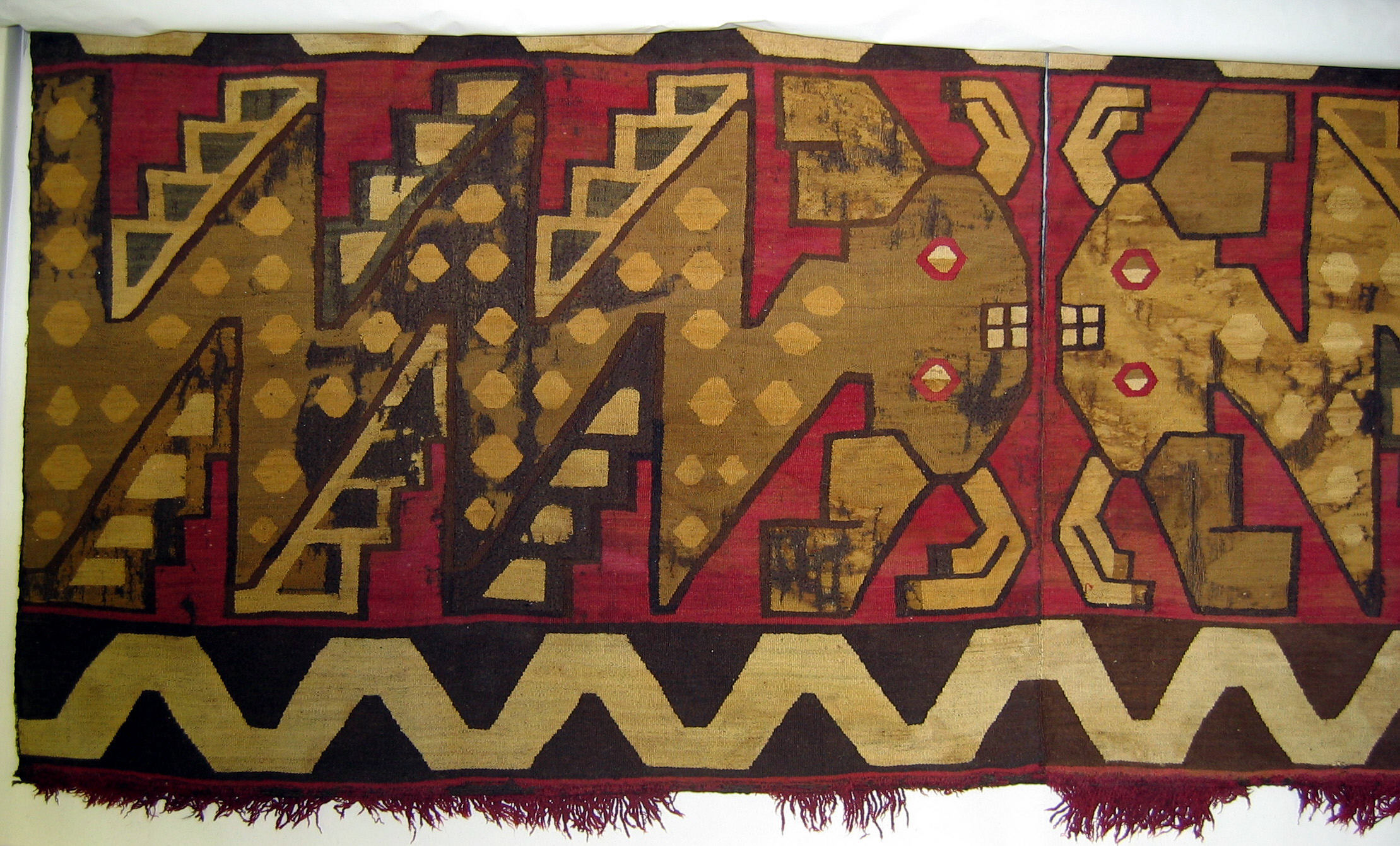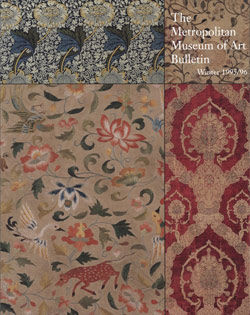Tunic with Confronting Catfish
Not on view
The primary items of clothing for men in ancient Peru were tunics, with or without sleeves. They had a vertical slit opening at the top for the neck. Considerable effort and time were invested in making elaborate tunics since, in addition to being practical, among many groups they were statements of ethnic affiliation, social status, and religious beliefs. Peruvian tunics display a great deal of variety in weaving technique and patterning and a wide range of colors. This example, made in the slit-tapestry technique, with identical halves joined at the center and along the sides, is bold in color and very unusual in design. Its main pattern consists of two catfish with spotted zigzag bodies facing each other at the center line of the tunic. Their large heads have bicolored eyes, bared teeth, barbels, and fins. While the shape and weaving technique are Nasca characteristics, the rendering of the eyes in two halves is indicative of the Wari style. This suggests that the tunic was woven in the Nasca area at a time when this region was under the influence of the Wari state.
Due to rights restrictions, this image cannot be enlarged, viewed at full screen, or downloaded.
This artwork is meant to be viewed from right to left. Scroll left to view more.


















